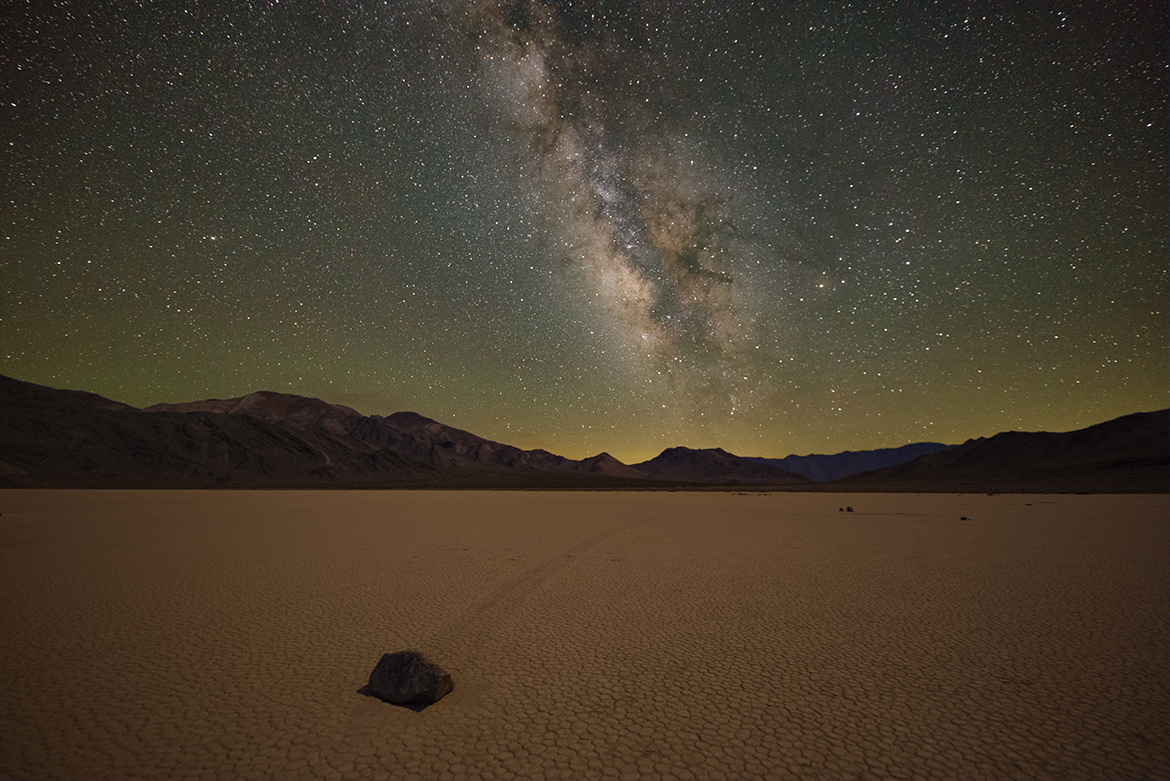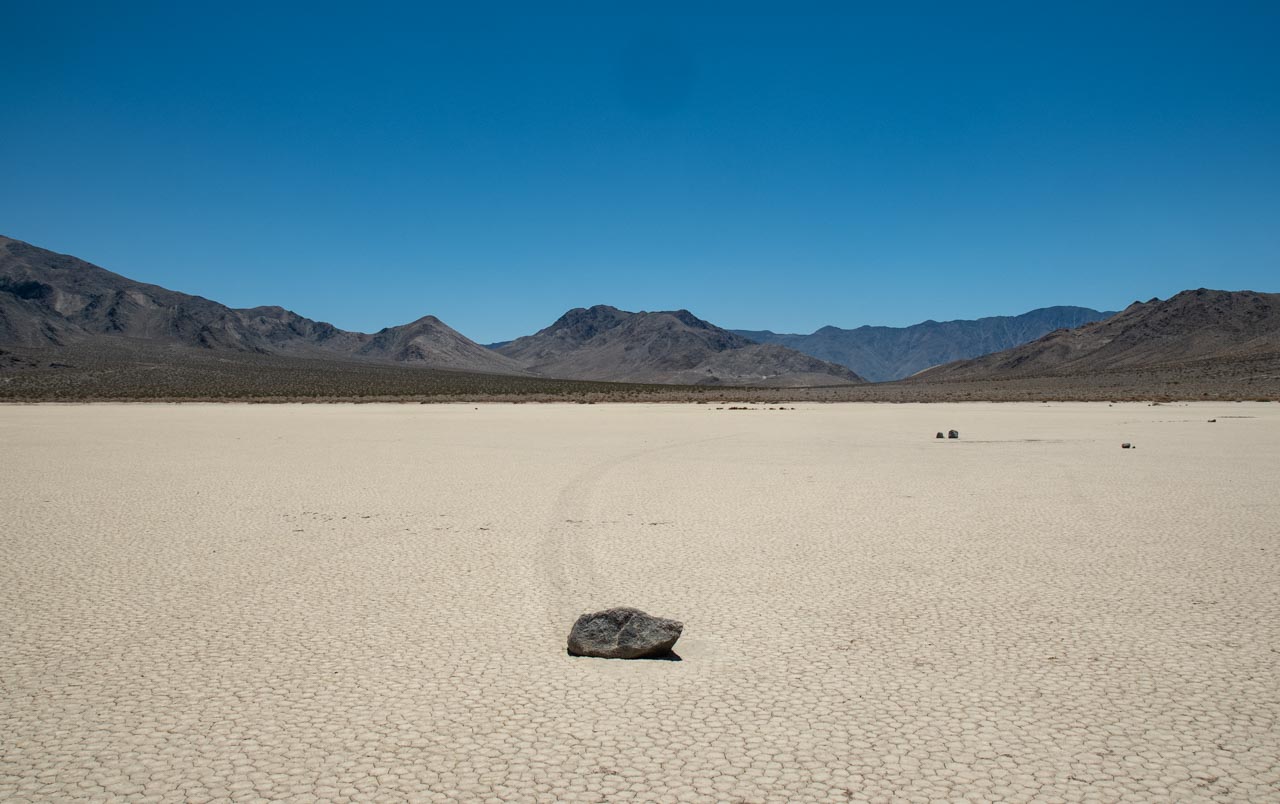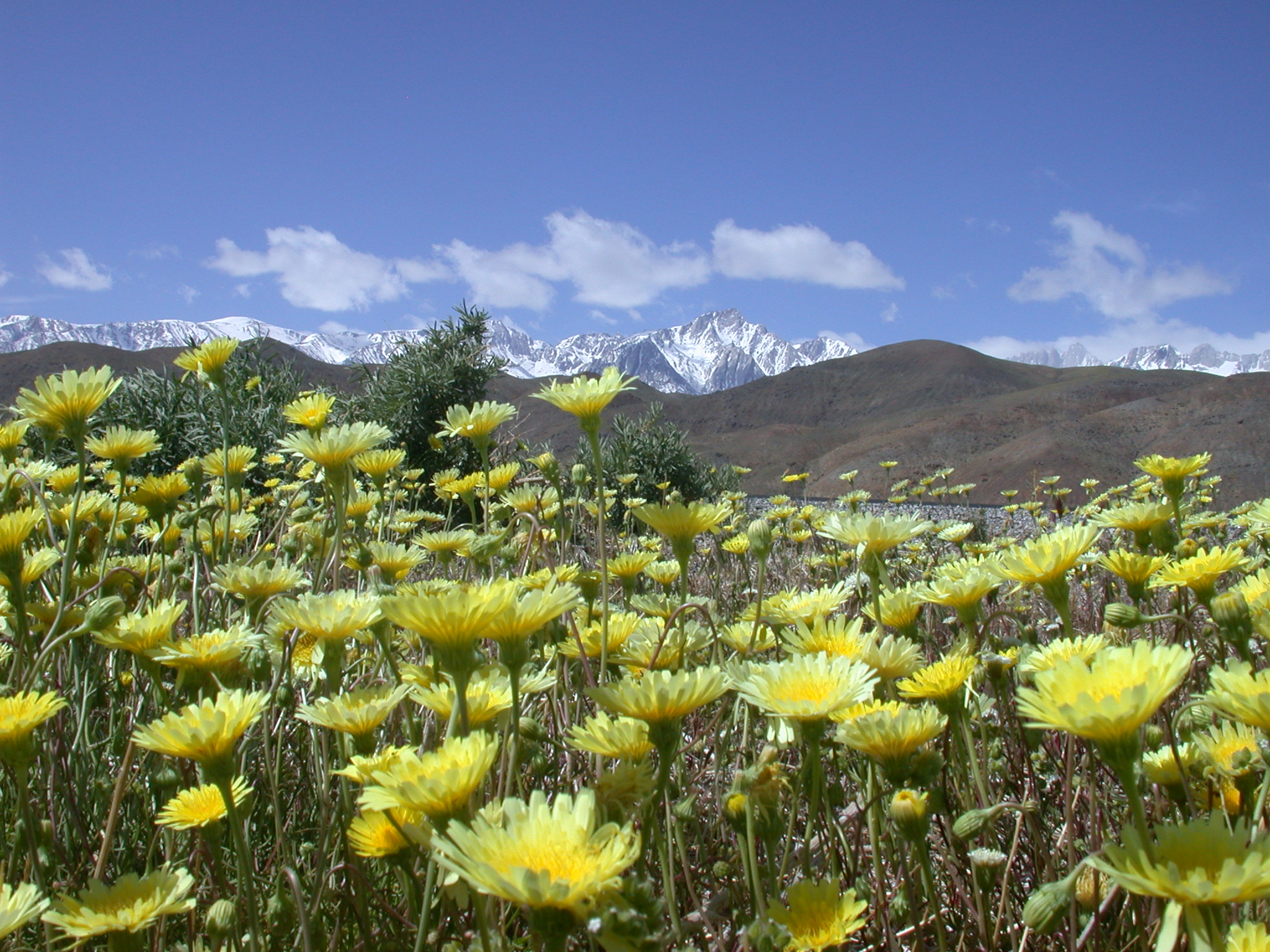
Racetrack Playa is a dry lakebed in Death Valley. It is a vast expanse, miles by miles, of dried mud cracks. It is flat and nearly level, the north end merely inches higher than the south. The occasional stone can be found on the playa, delivered by erosion forces on the surrounding mountains, falling down and rolling out onto the lakebed. They are stones, not boulders, maybe a foot or two across, heavier than is convenient to carry away, but not heavy enough to protect them from magic seekers.
And the magic they seek is that many of the stones are found at the end of a long, physically engraved trail, recording their traversal of the ancient lakebed. How could these stones have moved across the dry playa? It has been a mystery to geologists for years. Various theories have been proposed, and some have been tested, but it is a difficult research project. The stones lie inert for years, and then, when next inspected, they have moved. With new trails marking their path! This is the magic that the stone thieves are after.
Continue reading


